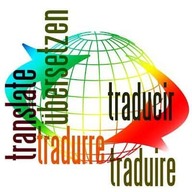Placa Tetuan is a vibrant urban square in the heart of Barcelona’s Eixample district, where history, culture, and local life intersect. Known for its striking monument and lively surroundings, this square offers a unique glimpse into Barcelona’s past while serving as a hub for both locals and visitors.
History of Placa Tetuan
Plaça de Tetuan was named to commemorate the 1860 Battle of Tétouan, a significant military victory for Spanish forces, including Catalan volunteers led by General Joan Prim, during the war against Morocco. The square’s name reflects a period of patriotic fervor and colonial ambition in 19th-century Spain. Over the years, the square’s identity evolved, including a period during the Second Republic when it was renamed after Hermenegildo Giner de los Ríos, a progressive educator.
At the heart of the square stands the Monument to Doctor Robert, a celebrated figure in Catalan history. Designed by Domènech i Montaner and sculpted by Josep Llimona, this monument was originally erected in Plaça Universitat in 1904 but was dismantled during the Franco regime. It was finally relocated to Plaça de Tetuan in 1985, symbolizing the city’s resilience and the restoration of democracy and Catalan identity.
Dining Nearby
The Eixample district, where Plaça de Tetuan is located, is renowned for its diverse culinary scene. Within walking distance of the square, visitors can enjoy everything from classic Catalan tapas bars to modern international eateries. The nearby Passeig de Sant Joan is particularly popular for its trendy cafes, bakeries, and bistros, offering options for breakfast, lunch, or a leisurely evening meal.
Views and Atmosphere
Plaça de Tetuan is characterized by its spacious layout, lush greenery, and the imposing Doctor Robert monument at its center. The square is a popular spot for locals to relax, children to play, and visitors to soak in the urban atmosphere. The intersection of Gran Via de les Corts Catalanes and Passeig de Sant Joan provides dynamic city views, with elegant Eixample architecture as a backdrop. The square’s design, with its open sightlines and shaded benches, makes it an inviting place to pause and observe Barcelona’s daily rhythm.
Attractions and Points of Interest
- Monument to Doctor Robert: This 12-meter-high sculpture is a tribute to a former mayor of Barcelona and a symbol of Catalan pride and resilience.
- Font de la Sardana: A notable fountain by Frederic Marès, adding artistic charm to the square.
- Proximity to Arc de Triomf: Just a short walk away, this iconic landmark connects the square to the city’s historic center.
- Cultural Events: The square occasionally hosts local festivals and open-air activities, reflecting the vibrant community spirit of the Eixample district.
Location and Accessibility
Placa Tetuan is centrally located at the intersection of Gran Via de les Corts Catalanes and Passeig de Sant Joan, in the Fort Pienc neighborhood of the Eixample district. The square is easily accessible via public transport, with the Tetuan Metro station (Line L2) situated nearby, making it a convenient starting point for exploring Barcelona.
Placa Tetuan Summary
Plaça de Tetuan is a historic and cultural landmark in central Barcelona, blending monumental art, local life, and urban energy. Its rich history, central location, and inviting atmosphere make it a must-see destination for anyone exploring the Eixample district.
The most important Barcelona Plaças (Squares) you need to know:

Coasteering Sant Feliu de Guixols!
Discover the Costa Brava’s wild side—explore coves & crystal-waters.


